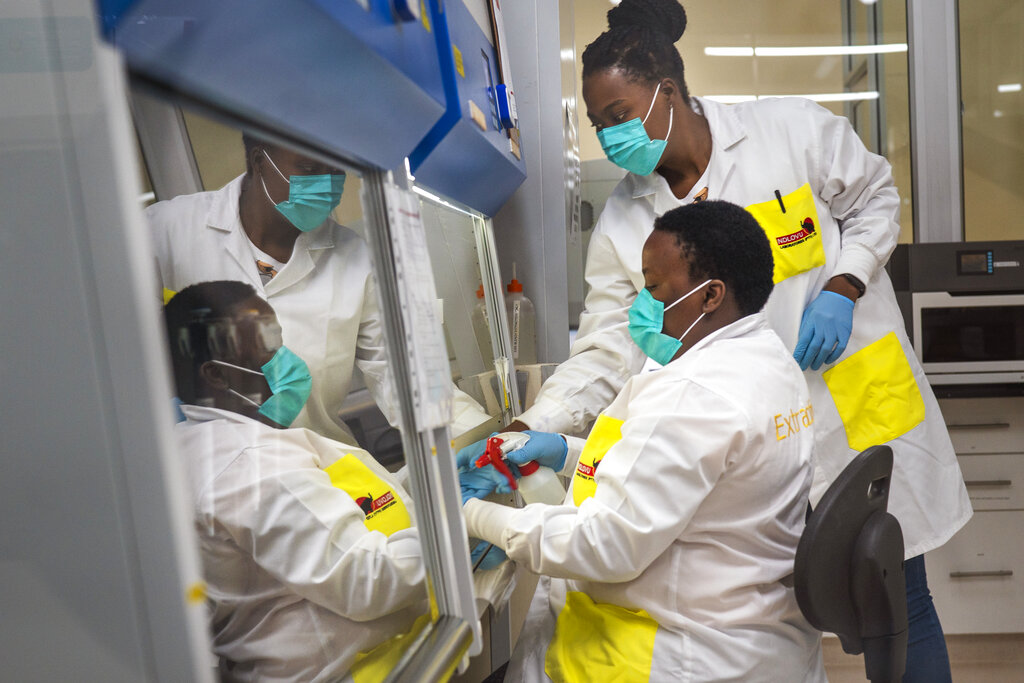Scientists Keep Close Eye on Deltacron
ADF STAFF
The idea of a COVID-19 hybrid that fuses the delta and omicron variants of COVID-19 is concerning scientists.
Delta, which first emerged in the spring of 2021, attacks the lungs and has a higher mortality rate than previous variants. Omicron currently is the dominant strain worldwide due to its ability to evade immune systems and spread more easily.
The Global Initiative on Sharing All Influenza Data (GISAID) confirmed the existence of a combination of the two strains, nicknamed “deltacron,” in March 2022 and said it has been circulating since early January.
GISAID is an organization of scientists from around the globe. They analyzed the viral data and called it the “first solid evidence for a delta-omicron recombinant virus.”
One such hybrid appeared in South Africa recently.
Tulio de Oliveira, director of the Centre for Epidemic Response and Innovation in South Africa, brought attention to a new SARS-CoV-2 recombinant virus in the country when he tweeted about it to his tens of thousands of followers.
“Now this [is] officially described as a Delta-Omicron recombinant and named as ‘XAY,’ he wrote on August 26. “At present, we are alerted but not concerned.”
When viruses carry a combination of genes from two variants, scientists call them recombinants. XBC and XAW are two other deltacron recombinant strains currently circulating.
“So very often recombination is the way in which we get pandemics of influenza,” Dr. Mike Ryan World Health Organization executive director for health emergencies said in March. “So we have to be very cautious … we have to watch these recombinant events very, very closely.”
The prevalence of COVID-19 cases from the XAY variant was extremely low, less than 3%, when it was found in South Africa in August, and it has remained that way through the latest reporting on November 11.
Dr. Etienne Simon-Loriere, a virologist at the Institut Pasteur in Paris, said recombination is nothing new but bears watching closely.
“This is not a novel concern,” he told The New York Times, adding that deltacron has not yet shown the ability to grow exponentially.
“The surface of the viruses is super-similar to omicron, so the body will recognize it as well as it recognizes omicron.”
As new genomes are uploaded to the GISAID database daily, scientists are keenly aware of the danger posed by a deltacron strain with just the wrong combination of traits from each variant.
Ryan said countries should continue to take precautions against further spread of the virus, including masking, hand-washing and social distancing.
Each new COVID-19 infection is an opportunity for new variants to evolve.
“We can manage many of these risks,” Ryan said “But the risks will continue, and there needs to be monitoring of that risk. And it needs to go on for a very long time.”
As for XAY in South Africa, de Oliveria said one of his colleagues suggested they pronounce it “X-YAY.”
“Of course, we hope and expect that to be just one of our jokes to keep work light as so far [XAY has] very low prevalence,” he tweeted in August.
By November, de Oliveria was happy to share an update on Twitter.
“Good news on COVID-19 variants,” he wrote. “The current sub-lineages BQ.1s & XBBs are not causing a deadly wave of infections in world.
“In South Africa, which many times see things early in Omicron evolution BQ1s & XBB low prevalence [and] no cause for great concern.”


Comments are closed.